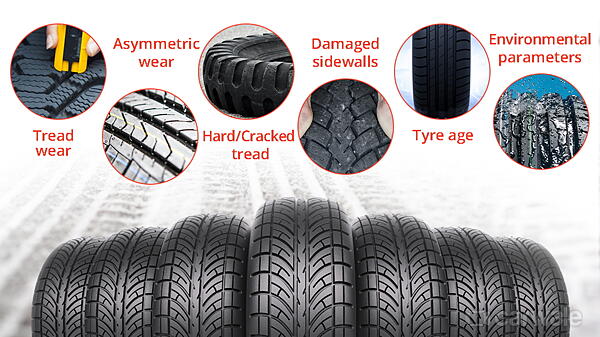Welcome to the fascinating realm of automotive maintenance, where the art of changing tyres parallels the experience of savoring your first bite of sushi. While tyre changes may not possess the same allure as a visit to a sushi bar, they play a pivotal role in ensuring your safety on the road. Today, we will delve into a question that occupies the minds of countless drivers: when should you change your car tyres in India?
Now, you might think the answer is obvious: “Change them when they are flat or worn out, obviously!” However, the matter is more nuanced than that. Tyres, much like fine wine, improve with age—but only to a certain extent. Beyond that threshold, their performance deteriorates, and not in the exhilarating and electrifying manner.
So, after what duration should you change your car tyres?When is the ideal time to do so? Does it depend on the number of years, miles driven, or when peculiar noises emanate from your wheels? Prepare to be surprised, as we unravel all the intricacies in this comprehensive guide.
Why should you change your car’s tyre?

Maintaining your vehicle’s tyres is a crucial aspect of car maintenance that is often overlooked. Tyres play a vital role in providing control, stability, and traction, making it essential to change them regularly.
There are several compelling reasons why you should prioritize changing your car’s tyres. Firstly, similar to other components of your vehicle, tyres wear out over time. As they deteriorate, their ability to grip the road decreases, which can result in compromised braking performance, longer stopping distances, and an increased risk of skidding. Regularly changing your tyres ensures that you always have sufficient tread depth to maintain optimal traction on the road.
Improved fuel efficiency is another significant advantage of changing your car’s tyres. Worn-out tyres generate more resistance, requiring your engine to work harder to propel the vehicle forward. This extra effort leads to decreased fuel economy. By changing your tyres on a regular basis, you can ensure that your car is operating at maximum efficiency, ultimately saving you money on fuel costs.
Safety is paramount when it comes to driving, and changing your car’s tyres plays a crucial role in maintaining a safe driving experience. Old or damaged tyres are more prone to punctures, blowouts, or other hazardous situations, significantly increasing the risk of accidents. By proactively replacing your tyres before they become excessively worn or damaged, you significantly reduce the likelihood of a serious incident on the road, ensuring your safety and that of your passengers.
To summarize, changing your car’s tyres regularly is essential for optimal traction, improved fuel efficiency, and enhanced safety. By prioritizing tyre maintenance, you can enjoy a smoother driving experience, save on fuel costs, and reduce the risk of accidents on the road.
When should you change your car tyre?

Choosing the right tyres for your car is essential for your safety and driving experience. There are several factors to consider when deciding when to change your car tyres in India:
1. Tyre wear: Tyres wear out over time, and their ability to grip the road decreases as the tread depth decreases. You can use the coin test or check the wear bars to determine if it’s time to replace your tyres.
2. Age: Even if your tyres have plenty of tread left, they can become unsafe due to aging. It’s recommended to replace tyres every six years, regardless of the mileage.
3. Driving conditions: Rough or unpaved roads, as well as extreme weather conditions, can cause your tyres to wear out faster. In such cases, it’s better to err on the side of caution and replace your tyres as needed.
4. Tread depth: The legal minimum tread depth for car tyres in India is 1.6mm, but it’s recommended to replace them when the tread depth reaches 2mm for optimal safety and performance.
5. Signs of wear: Regularly inspect your tyres for signs of wear such as tread depth, cracks, bulges, blisters, uneven wear, and excessive vibration. These signs indicate that it may be time to replace your tyres.
6. Manufacturer recommendations: Consult your car’s owner’s manual or tyre placard for the manufacturer’s recommendations regarding tyre size, type, load capacity, speed rating, and replacement intervals.
7. Seasonal changes: Consider changing to summer tyres, winter tyres, all-season tyres, or monsoon tyres depending on the weather conditions in your area.
When choosing new tyres, consider factors such as size, type, brand, tread pattern, load capacity, speed rating, inflation pressure, price, warranty, and reviews. It’s important to choose tyres that are suitable for your vehicle and driving conditions to ensure optimal safety and performance on the road.
Read More:




